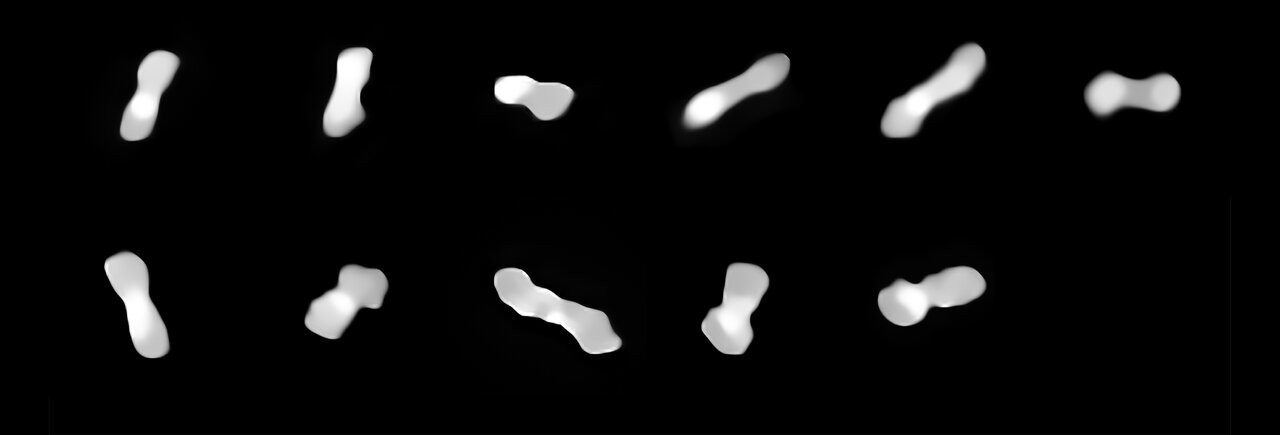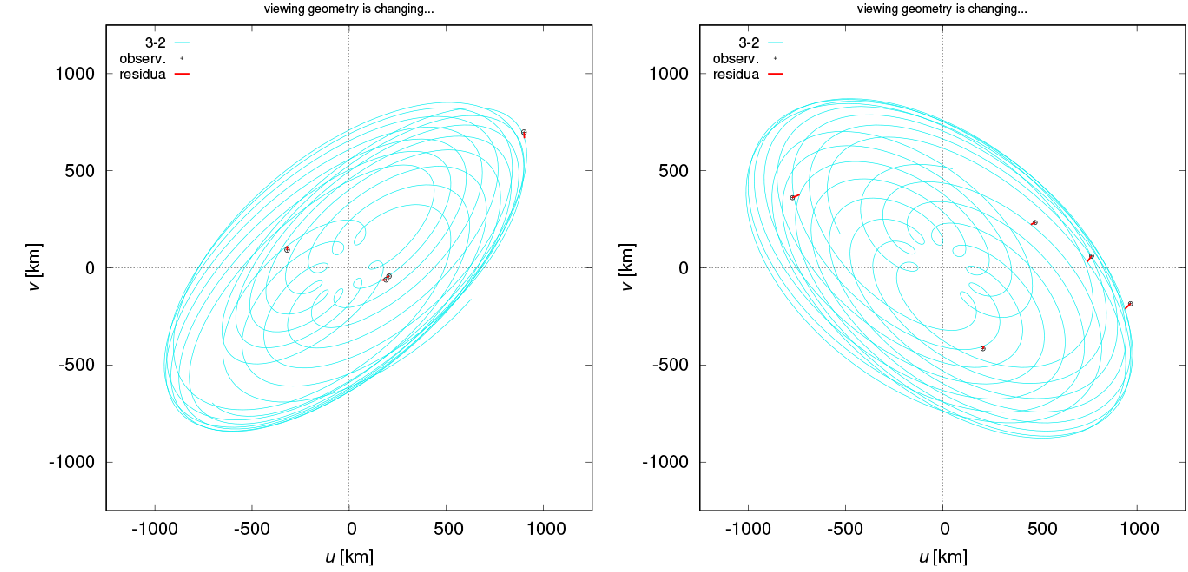
Using the European Southern Observatory's Very Large Telescope (ESO's VLT), a team of astronomers have obtained the sharpest and most detailed images yet of the asteroid Kleopatra. The observations have allowed the team to constrain the 3D shape and mass of this peculiar asteroid, which resembles a dog bone, to a higher accuracy than ever before. Their research provides clues as to how this asteroid and the two moons that orbit it formed.Kleopatra also possesses another characteristic: a two-moon system discovered in 2008 by Franck Marchis' team at the Keck Observatory.
It is interesting to observe that the dynamics of Kleopatra's three-body system and its moons turn out to be chaotic. I hope to soon publish an article on the problem of the three bodies to clarify this aspect.

Read ESO's press release
Marchis, F., Jorda, L., Vernazza, P., Brož, M., Hanuš, J., Ferrais, M., ... & Yang, B. (2021). (216) Kleopatra, a low density critically rotating M-type asteroid. Astronomy&Astrophysics, 653. doi:10.1051/0004-6361/202140874
Broz, M., Marchis, F., Jorda, L., Hanuš, J., Vernazza, P., Ferrais, M., ... & Yang, B. (2021). An advanced multipole model for (216) Kleopatra triple system. Astronomy&Astrophysics, 653. doi:10.1051/0004-6361/202140901
Broz, M., Marchis, F., Jorda, L., Hanuš, J., Vernazza, P., Ferrais, M., ... & Yang, B. (2021). An advanced multipole model for (216) Kleopatra triple system. Astronomy&Astrophysics, 653. doi:10.1051/0004-6361/202140901
Descamps, P., Marchis, F., Berthier, J., Emery, J. P., Duchêne, G., De Pater, I., ... & Macomber, B. (2011). Triplicity and physical characteristics of Asteroid (216) Kleopatra. Icarus, 211(2), 1022-1033. doi:10.1016/j.icarus.2010.11.016





